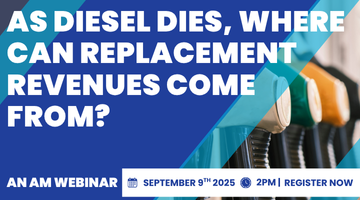For car dealers to be continuously successful, their customers have to have a satisfying experience at each stage of the sales process – from when they first research a vehicle online, through to when they step into the dealership and drive off after their third service.
But achieving this superior level of customer experience (CX) can only come if dealerships and their sales teams stop seeing CX metrics, introduced by the car manufacturers, as tool to be used against them.
When engaging with a customer, salesmen are measured on a number of metrics, from how they greet a customer through to the test drive and the closing and follow-up of the sale.
There is no denying that the sales process has evolved and so have the metrics that are used to measure it.
CX measurement has historically been linked to bonuses, meaning that if a customer gives a rating of “completely satisfied”, the salesman is rewarded. But if the customer does not, the salesman loses out – a process that inevitably leads to short-term thinking rather than a long-term customer relationship.
Considering the lifetime value of customer, ensuring their ongoing satisfaction is key to repurchase and recommendation through word of mouth, dissatisfaction at any point in the ownership cycle will impact the bottom line.
Thus, more focus must be placed on the voice of the customer (VoC) as it is the most valuable way to connect and engage with customers at crucial stages in their journey – it is the key to understanding their expectations, preferences, likes and dislikes.
One of the most direct ways to follow the customer journey is to collect feedback via social media. While detailed, real-time comments on social media channels are still rightly regarded as gold dust, they also present their own data volume and analysis problems.
The power of online
Along the customer journey, many consumers use the internet to share their experiences often on automotive rating sites, meaning that existing customers and prospects wield a huge amount of power and influence over future customers, whose journey typically starts with a period of discovery.
Most consumers go online to consult reviews, blogs or their social network as a key step in the process.
This is particularly true with high-end purchases – buying a car tends to be the second biggest purchase a consumer will make, second only to a home.
According to the Automotive Buyer Influencer Study, buyers spend 75% of the shopping process online, which goes in line with other studies that show that anywhere from 70 to 90% of customers seek out online reviews before making a purchase.
Therefore, dealers have to evolve their CX survey process. While there are typically two extremes when it comes to customer feedback directly in follow-up surveys or social media review sites – either very happy or incredibly unhappy – being able to coax out additional insight from the middle ground is incredibly beneficial.
The key is to make feedback on social media more targeted so that comments from customers are in the right place to influence future customers or appease negative comments, maximizing the benefits to be gained.
Redirecting influencers to pre-selected rating sites, company-owned or third party, following the completion of a transactional survey as standard, gives insights into the experience future customers can expect.
The importance of ‘local level’ monitoring
While most organisations today offer social care or response at a brand level, providing it at a local level is equally as important.
By using a CX monitoring platform that brings together online reviews, filtered specifically for a dealership, from across the social landscape, enables salesmen to review feedback and create the necessary alerts when required.
This makes it easier to respond immediately to customer feedback, and more importantly, demonstrates a commitment to customer service and problem resolution for future customers who visit those review sites.
It also means that if customers are increasingly turning to a particular social channel or site, the dealer can ensure it has enough reviews to demonstrate exceptional service or counter any negative comments.
Today’s social landscape shows no sign of halting its influence on CX. In fact it is only going to become more critical as the number of social channels and sites increases.
Through understanding and leveraging its power in the customer journey, dealers can turn it into a tool that not only improves the experience for existing customers but also helps convert potential customers.
By being armed with the insightful and relevant information, dealers will improve their customer’s experiences and reap the benefits.
Author: Andrew Grant, VP of Automotive Serices for MaritzCX Europe



















Login to comment
Comments
No comments have been made yet.